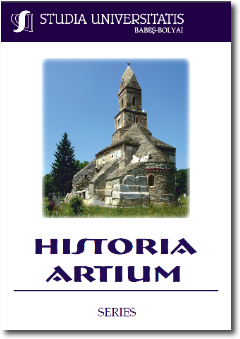PROGRAMUL UNEI VIEȚI: ROLUL LUI LAJOS PÁKEI ÎN ÎNFIINȚAREA MUZEULUI INDUSTRIAL ȘI A ȘCOLII INDUSTRIALE DIN CLUJ
ONE LIFE’S MISSION: LAJOS PÁKEI’S ROLE IN ESTABLISHING THE INDUSTRIAL MUSEUM AND THE INDUSTRIAL SCHOOL IN CLUJ
Author(s): Miklós SzékelySubject(s): Cultural history, Museology & Heritage Studies, Vocational Education, History of Art
Published by: Studia Universitatis Babes-Bolyai
Keywords: urban planning; museum of industry; vocational education; decorative arts; museum of decorative arts;
Summary/Abstract: One Life’s Mission: Lajos Pákei’s Role in Establishing the Industrial Museum and the Industrial School in Cluj. The development of museums and schools of industry took place in some important industrial cities of the Dual-Monarchy, a part of the capitals in Salzburg, Graz, Prague, Brno, Czernowitz starting from the 1870-1880s. In the last quarter of the 19th century several school and some museum buildings of industry were erected in Hungary. Some of these new edifices were capable of performing dual, educational and museum tasks due to their special spaces: their list includes Ödön Lechner’s Museum of Applied Arts in Budapest, Alajos Hauszmann’s Technologic Museum of Industry in Budapest and Lajos Pákei’s Museum of Industry in Kolozsvár (Cluj Napoca). It is exactly in this period that Lajos Pákei graduated from Theophil Hansen’s studio in Vienna, and soon after, in 1880 he became chief architect of the city of Kolozsvár. In his new position the young architect played a prominent role in the infrastructural and institutional modernization of the city. One of the biggest investments of the city focused on the reshaping of the industrial institutional structure – this process was articulated around the foundation of the Museum and School of Industry of the city. Acting also as the director and professor of architectural disciplines in the school of industry of the city he had a significant impact on the development of a master builder, stone and wood carving classes and moreover in the curriculum of the educational profile of the institution. Lajos Pákei followed the architectural principles of Camillo Sitte in terms of urban city planning in Kolozsvár under the influence of the Austrian architects work published in 1889 entitled Der Städtebau nach seinen künstlerischen Grundsätzen. Kolozsvár, the par excellence renaissance town of historic Hungary. The town was the birthplace of the last great medieval king of Hungary, the earliest renaissance ruler over the Alps, King Mathias (1443-1490) whose political and cultural legacy as national king and the town’s long goldsmith and woodcarving activity have become a points of reference the late 19th century discourse on the modernization of Kolozsvár. Lajos Pákei was one of the members of the first generation of architects having accomplished their studies in the new political circumstances related to the creation of the Austro-Hungarian Monarchy. Lajos Pákei in Kolozsvár has completed diverse missions simultaneously such as did Camillo Sitte in Vienna or Joseph Leitzner in Czernowitz: he actively reshaped the urban spaces of his city, made architectural plans for the industrial museum and school, as director he influenced the educational profile of the school of industry and the acquisition policy of the museum of industry. Lajos Pákei prepared several plans for this building of dual function through almost first fifteen years. After a number of design changes the museum-school building was finally built between 1896 and 1898. Due to the rapidly growing collection, the shift in the acquisition policy from technological profile to applied arts objects, the growing number of students soon it became too small, and the construction of a purely museum building has become necessary. The building of the museum of industry has been erected in 1903–1904 opposite the previous one, according to the plans of Lajos Pákei. The first, museum-school building followed the construction principles of Hungarian secondary school architecture of its time, including a centrally positioned external wing for the technological collection. The second one – planned purely for museum purposes – followed the latest example of applied art museum buildings, the one of Joseph Schulz in Prague built in 1897–1901. The history of two buildings of Lajos Pákei in Kolozsvár reflect the specialization of educational and museum spaces, the characteristics of the changing models in industrial education and presentation of the changing profile of the collection as “ideal of a modern museum” as an attempt to develop. The study interprets the foundation and the management of the museum and school of industry as the lifetime project of Lajos Pákei in the context of architectural modernization (both in education and practice) in the Dual Monarchy and in the theoretical framework of urban planning.
Journal: Studia Universitatis Babes Bolyai - Historia Artium
- Issue Year: LXVI/2021
- Issue No: 1
- Page Range: 115-154
- Page Count: 40
- Language: Romanian

